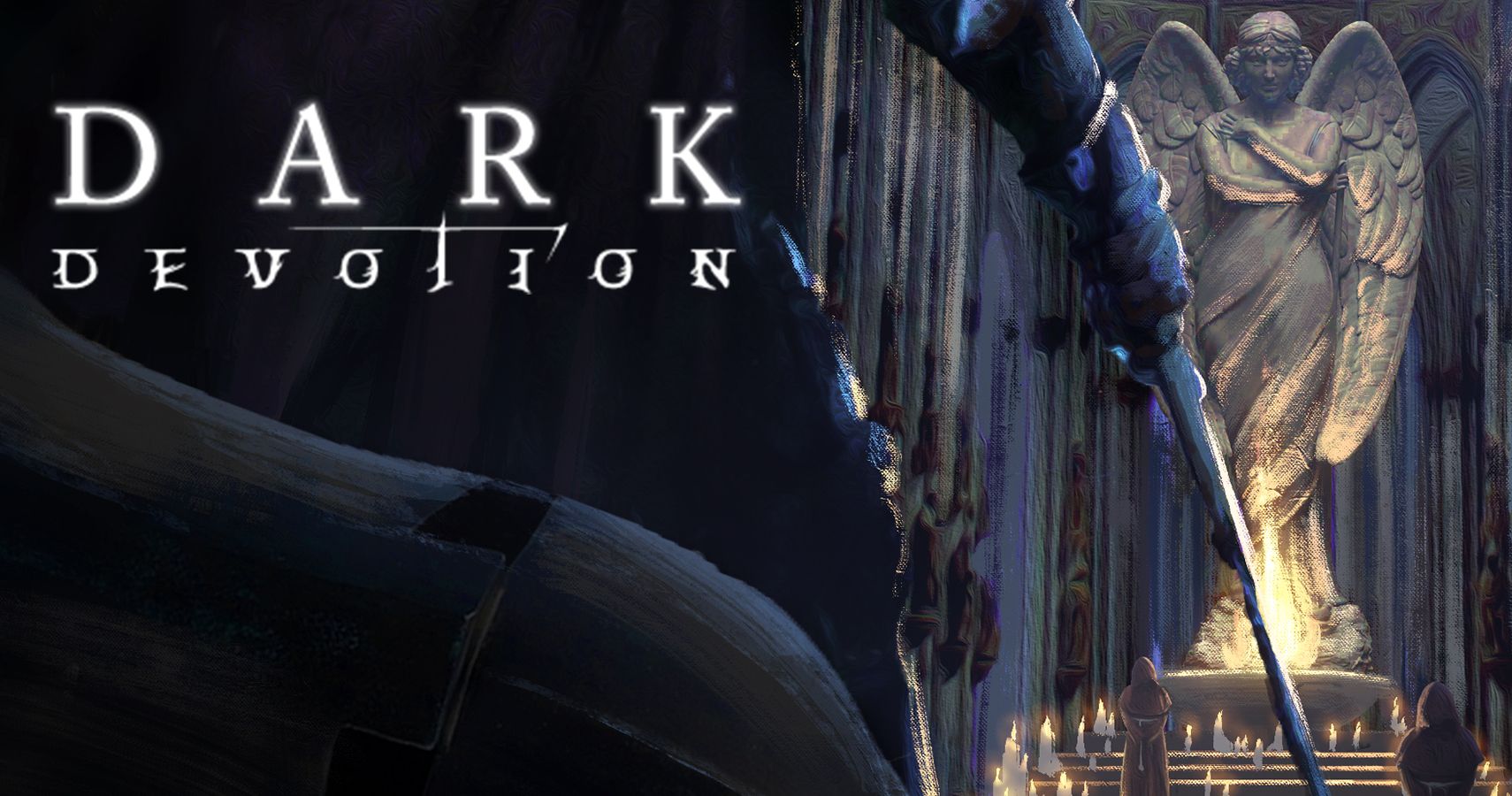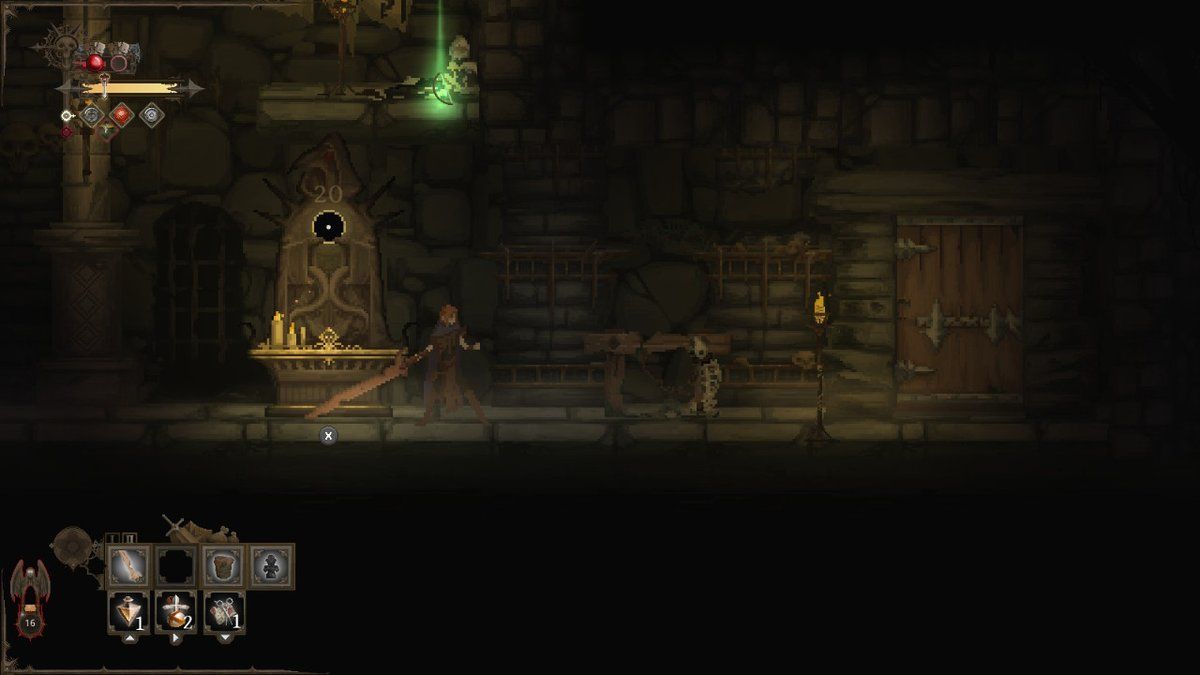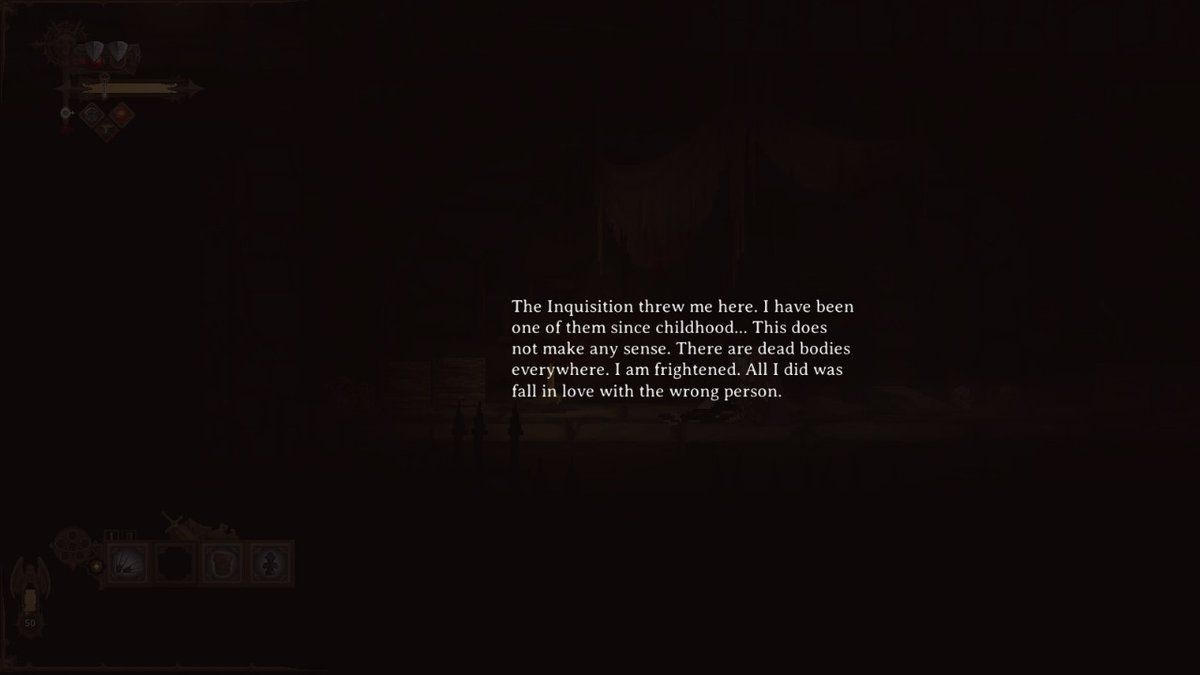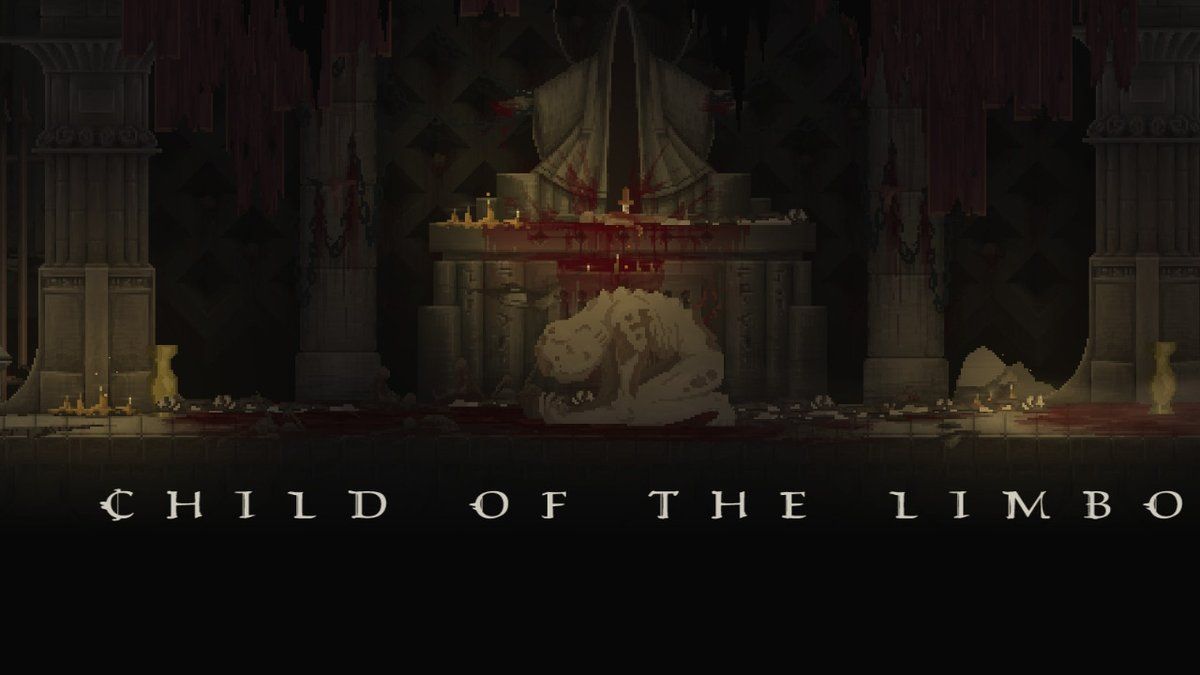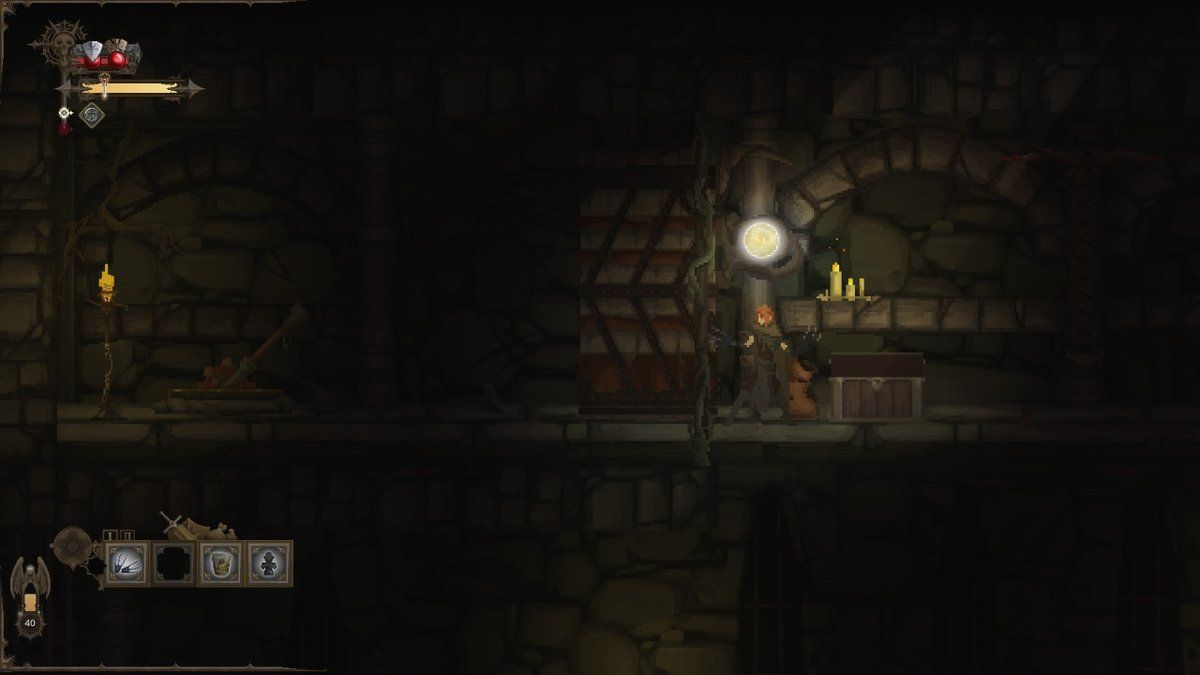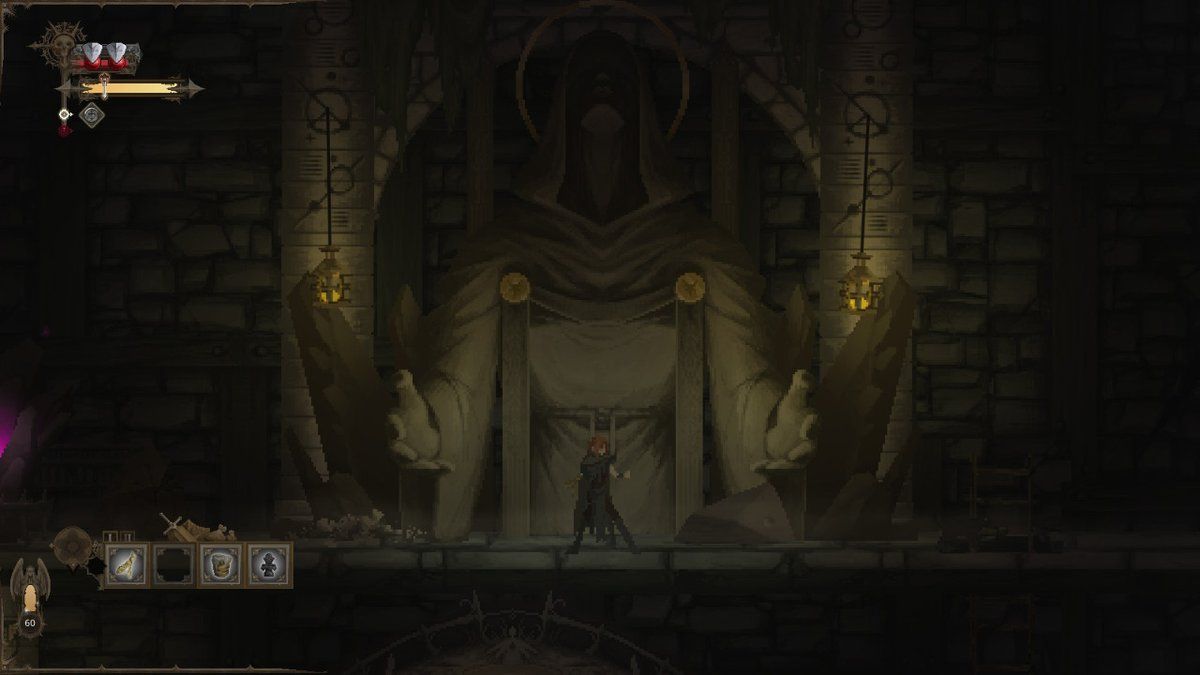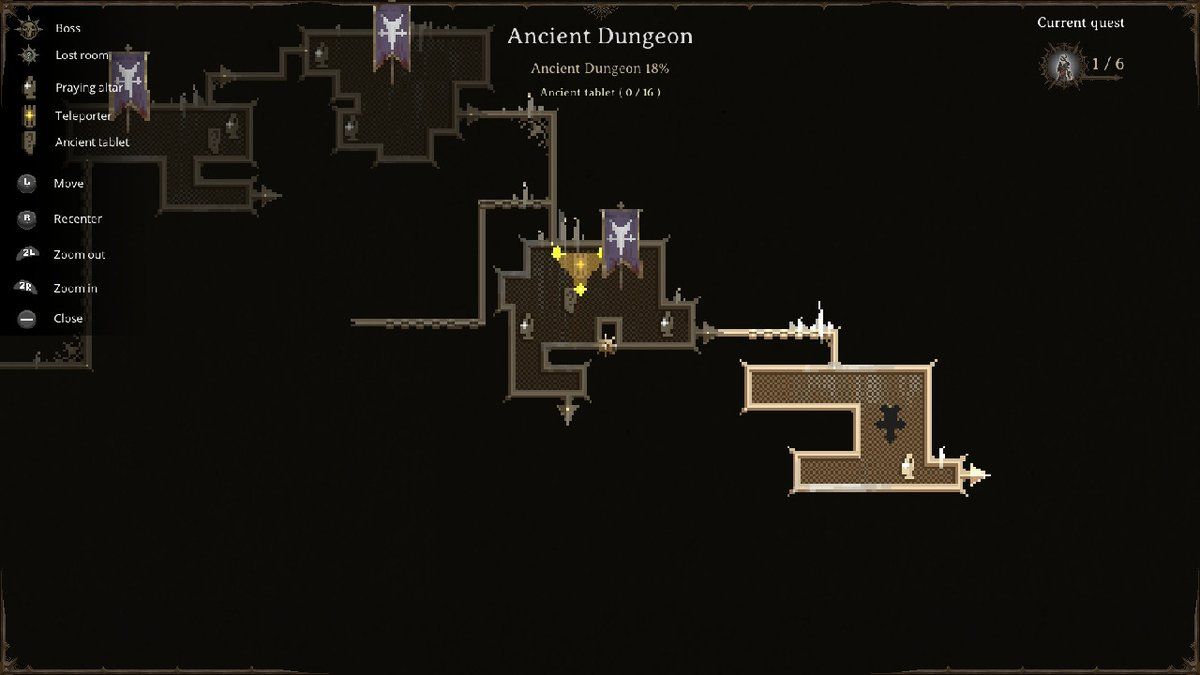In Dark Devotion, developer Hibernian Workshop has set out to create a difficult, atmospheric 2D action-platformer set in a gritty, corrupt temple of pain and death. The style is old school, simple, but thoroughly engaging for those seeking a challenge. Players who are looking for a punishing game that demands care to progress are in for a treat, as the game rewards skilled gameplay and quick fingers.
The Templar's Crusade
Although there is an initial cutscene, details on what exactly is happening in this world are sparse from beginning to end. The player takes on the role of one of many Templars that wishes to praise their God, and the best way to do this is to march into the temple and cleanse everything inside.
There are snippets of information scattered throughout the game that adds to the worldbuilding, but not in any deep way. Most are still interesting and relate to the confusion felt by those Templars who are near death, or by those who feel that they have been sentenced to die unfairly, which appears to be most of the dungeon’s victims.
We will not spoil the ending, but players should be aware that even if they triumph over the difficult bosses and complete the game, the story remains as cryptic as it did in the beginning. Luckily, the gameplay makes up for a lack of story.
Pay Attention
Players are thrown into combat right away to see what they are up against. Most opponents have a standard set of attacks, and it appears that they mix up their moves depending on how you play as well. Dodging through an opponent as they attack may be a good strategy against some, but one learns quickly against the Child of Limbo, the first “boss," will switch their animation midway through a forward attack and switch to a backward-facing attack. In this way, it seems the opponent will attack based on your distance and attempting to stand just out of reach often invites a dashing or jumping attack.
Once a player begins exploring the dungeon, the play on shadows is apparent from the beginning. The darkness serves a dual purpose, first in that it makes your attacks more likely to miss, and second to help obscure traps that can kill you in a single hit, like the spiked pits.
Choose Your Weapons Wisely
There is a broad range of weapons to choose from, and each offers its strengths and weaknesses. One-handed weapons, for example, are often for short-range fighting, but allow you to equip a shield or something else in the other hand. Two-handed weapons offer a narrow window in which one can block, but have the advantage of a much longer attack range, which leaves you in relative safety against many opponents. Ranged weapons are useful to get in a small bit of damage, but often the opponent will quickly advance in your direction and require melee weapons to finish them off.
The stamina system will be familiar to those who have played Dark Souls and Bloodborne, demanding a careful strategy for combat. Attacking and dodging deplete the bar and cannot be spammed. Players will instead need to plan their moves carefully, and the challenge is bolstered with the constant darkness and traps that lay in wait.
Get Used To Dying
Death will come often, especially when learning how to counter all the enemies, bosses, and to avoid the traps that can kill you in an instant. Upon death, players are sent back to their main base, from which they can upgrade their abilities, craft weapons, and teleport to areas of the dungeon they may have unlocked.
Death comes with the harsh consequence of taking your items away, except for certain permanent ones that you find throughout the game. Those lost weapons are forever gone and running back to the spot you died a moment ago will not reveal them on the ground, so choose wisely.
Have Faith
The Faith system is another resource that players need to keep an eye on, as it is needed to open doors and certain chests with items inside, or to obtain certain blessings that remove debuffs or that can heal you. Unlike Stamina, Faith is restored by defeating enemies and through items that can be found around the dungeon. Faith is also used to power magical abilities, which is an interesting design choice. Opting to use a magical ability may be useful in the moment, but may leave you drained of the Faith needed to unlock a new area.
The map is constantly updating as you explore the depths of each area and is quite useful for planning how to use Faith. While a player may not have enough Faith at one point, they will surely die and can revisit each place later on. It may be morbid, but it’s a viable strategy.
Worth It For Those Who Are... Devoted
It should be stressed again that Dark Devotion does not hold a player’s hand. After the most minimal of instruction in some of the systems, players are left to their own devices to slog through the world. Like in any good roguelike, regular opponents can be dispatched easily with some practice, though they still require care. Bosses, meanwhile, are extremely difficult, first because one needs excellent timing, but they must also be figured out, much like a puzzle. Running in at full steam to hack away at a boss will only lead to a quick death. Players who do not relish the idea of dying many times may not enjoy the game, but for others, this will be a great challenge.
Still, this is merely a cautionary warning. The game itself is great and succeeds in what it sets out to do. The only part of the game that is lacking is a proper, fully-fleshed out narrative explaining what exactly this is all for, and what has happened in the end.
A digital Switch review code of Dark Devotion was provided to TheGamer for this review. Dark Devotion is now available on the PlayStation 4, Xbox One, Nintendo Switch, and PC.
Dark Devotion

